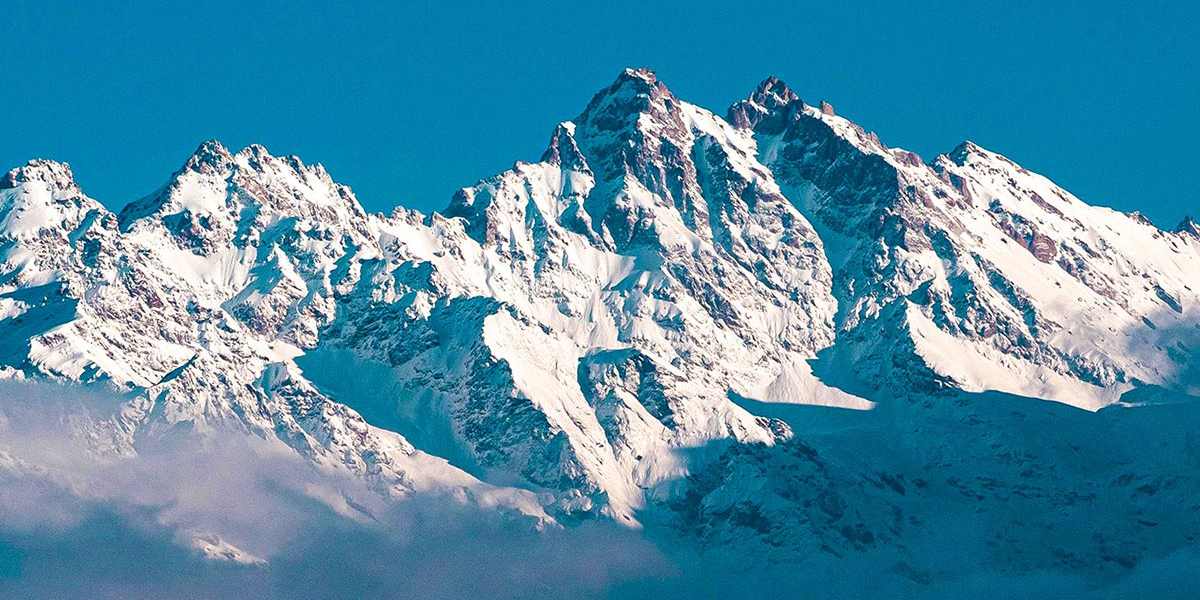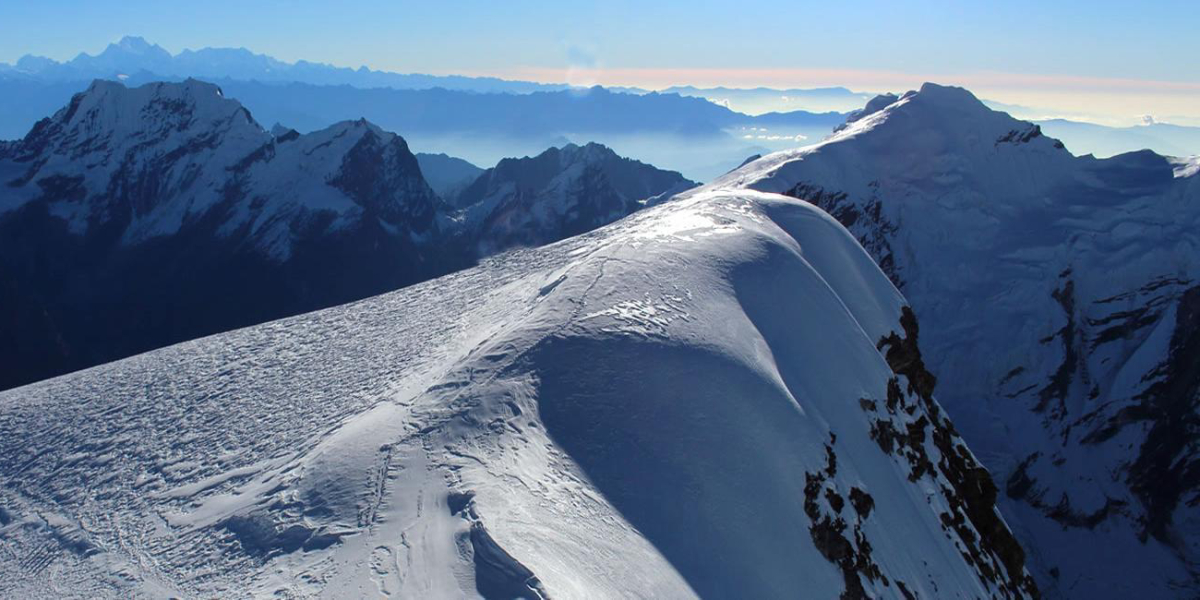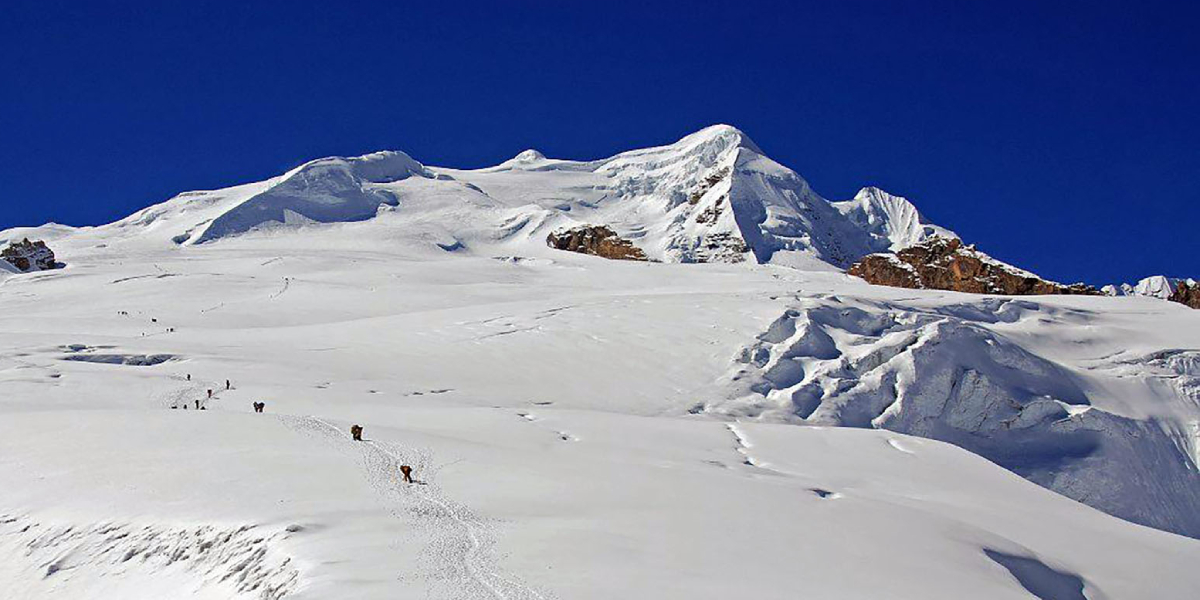Mera Peak Climbing










Mera Peak (6,476m) is officially the highest trekking peak in Nepal, located in the remote Hinku Valley of the Khumbu region. Unlike some technical climbs in the Himalayas, Mera Peak is achievable for trekkers with strong fitness levels and determination even if they’re new to climbing. What makes Mera Peak special is the combination of breathtaking scenery, cultural immersion and the thrill of stepping onto a Himalayan summit.
The journey begins with a scenic mountain flight into Lukla, the iconic gateway to Everest. From there, the trail leads you away from the busy Everest Base Camp route and into the quieter valleys of Makalu Barun National Park. You’ll pass through lush forests of rhododendron and pine, cross suspension bridges over roaring rivers and stay in traditional Sherpa villages where you’ll experience warm hospitality and unique highland traditions.
As the trek continues, the landscape transforms. Forested hills give way to alpine pastures, glacial moraines and high ridges. By the time you reach Khare, the last settlement before the climb, you’re surrounded by dramatic peaks and the vast expanse of snow and ice. Here, you’ll receive mountaineering training from experienced climbing Sherpas, learning how to use crampons, ropes and an ice axe.
The highlight is of course summit day. Starting in the early hours under a starlit sky, you’ll trek steadily across the Mera Glacier toward the summit. As dawn breaks, the sky lights up with a 360° panorama of the tallest mountains on earth: Everest, Makalu, Cho Oyu, Lhotse and even Kanchenjunga in the far distance. Reaching the summit is an emotional moment, a mix of accomplishment, awe and pure Himalayan magic.
This expedition is more than just climbing a peak. It’s about pushing your limits, embracing local culture and carrying home memories of a lifetime. Mera Peak is ideal for adventurers seeking their first real Himalayan climbing experience.a
Itinerary
Arrival in Kathmandu (1,400m)
Your Himalayan adventure begins as you land at Tribhuvan International Airport in Kathmandu. Our representative will be waiting to welcome you and assist with the transfer to your hotel. After settling in, you’ll meet your climbing guide for a trip briefing. This is when we go over the trek plan, safety measures and perform a gear check to ensure you’re fully prepared. In the evening, you can stroll around Thamel, the bustling hub of trekkers or enjoy a Nepali welcome dinner.
Fly to Lukla (2,800m) – Trek to Paiya (2,730m)
Early in the morning, take a breathtaking flight to Lukla. The small aircraft weaves through dramatic valleys and offers your first aerial glimpse of snow-capped peaks. Once in Lukla, meet your porter crew and start the trek. The trail descends through dense forests of fir and rhododendron, crossing small streams and suspension bridges. After several ascents and descents along ridges, you’ll reach Paiya, a quiet Sherpa settlement with terraced fields and traditional houses.
Trek to Pangkongma (2,846m)
Leaving Paiya, the path winds through lush forests alive with birdsong. You’ll pass farming villages where locals cultivate maize, potatoes and barley. The views of the Dudh Kosi Valley open up with distant snow peaks peeking above the ridges. The trail is gentle but steady, offering plenty of opportunities to interact with villagers and learn about Sherpa culture. Pangkongma, a small agricultural community, becomes your resting spot for the night.
Trek to Nashing Dingma (2,600m)
Today’s highlight is crossing Pangkongma La Pass (3,150m). The climb to the pass is demanding but rewards you with wide views of the surrounding valleys and ridges. Once over the pass, the trail descends sharply through forests into Nashing Dingma, a small cluster of homes perched above terraced fields. The air feels fresher and the night is peaceful with the sound of distant rivers.
Trek to Chhatra Khola (3,100m)
You’ll head into wilder terrain today. The path winds through thick bamboo and pine forests, following ridges and streams. This region is less traveled so wildlife sightings are possible, if you’re lucky, you may spot the elusive red panda or Himalayan birds. After a full day of trekking, you’ll camp or stay in simple teahouses by the Chhatra Khola river, where the sound of rushing water lulls you to sleep.
Trek to Kothe (3,691m)
Following the Hinku Khola river upstream, you’ll gradually gain altitude. The vegetation shifts from lush forests to alpine landscapes with juniper and moss. The air grows thinner and views of surrounding snow-capped peaks become more prominent. Kothe is a settlement with a few teahouses and provides your first close-up of Mera Peak towering in the distance.
Trek to Thangnak (4,358m)
Leaving Kothe, the trail follows glacial moraines and open yak pastures. You’ll notice the change in altitude as the air feels cooler and thinner. The walk is steady with fewer villages but grander mountain views. Thangnak is a small but picturesque hamlet surrounded by rocky peaks and glacial debris, serving as a perfect place to rest and acclimatize.
Trek to Khare (5,045m)
The trail ascends steadily toward Khare, often called “Mera Peak Base Camp village.” The climb is over rocky moraines and each step brings you closer to the north face of Mera Peak. Khare sits at the foot of vast glaciers and serves as the last human settlement before the climb. The village is buzzing with climbers preparing for their summit push, adding excitement to the air.
Training and Acclimatization at Khare
This is your climbing preparation day. Under the guidance of your climbing Sherpa, you’ll practice walking with crampons, using an ice axe and ascending with ropes on snow slopes. This training builds confidence for the summit day. The rest of the day is spent resting, hydrating and mentally preparing for the climb ahead.
Trek to High Camp (5,780m)
Today’s trek is challenging as you move onto the Mera Glacier. The climb to High Camp requires stamina and focus but the views are spectacular. The campsite is set on a rocky ridge above the glacier. At High Camp, the panorama of Everest, Makalu and Cho Oyu is nothing short of breathtaking. You’ll sleep in tents, bundled up against the cold, dreaming of the summit.
Summit Mera Peak (6,476m) – Return to Khare
The big day! Wake up around 2–3 am, have an early breakfast and begin the climb under a canopy of stars. The ascent is gradual, mostly on snow slopes, but the thin air makes it tough. As the sun rises, golden light spreads across the Himalayan giants, creating a view you’ll never forget. Standing on Mera’s summit, you’ll witness five 8,000m peaks in one sweep: Everest, Makalu, Lhotse, Cho Oyu and Kanchenjunga. After celebrating, carefully descend back to Khare for a well-deserved rest.
Contingency Day
This extra day is a buffer in case of bad weather or health-related delays. If everything goes as planned, you can use it to rest and enjoy more time in the mountains.
Trek to Kothe
Leaving the glaciers behind, descend through alpine terrain and retrace your steps to Kothe. The drop in altitude feels refreshing and the warmer air makes breathing easier.
Trek to Thuli Kharka (4,300m)
Climb back up through rhododendron and juniper forests. Thuli Kharka sits on a ridge, offering a final sweeping view of Mera Peak and other Himalayan giants.
Trek to Lukla via Zatrwa La Pass (4,600m)
A long but rewarding day. You’ll cross the high Zatrwa La Pass with incredible views of the Khumbu Valley on one side and Makalu Barun ranges on the other. After a steep descent, you reach Lukla. Tonight, you celebrate the successful climb with your team.
Fly back to Kathmandu
Take the morning flight back to Kathmandu, leaving the mountains behind. After checking into your hotel, you have the rest of the day free to shop for souvenirs, relax or explore historic sites like Durbar Square.
Departure
Your climbing journey concludes. Our team will drop you at the airport for your onward flight. With Himalayan memories in your heart, you’ll leave Nepal but the mountains will surely call you back again.
Includes/Excludes
- Airport transfers in Kathmandu
- Domestic flights: Kathmandu–Lukla–Kathmandu
- All trekking and climbing permits (including Mera Peak permit)
- Accommodation in lodges/tea houses during trek, tents during climb
- Three meals a day (breakfast, lunch, dinner) during trek and climb
- Experienced English-speaking trekking guide and climbing Sherpa
- Porters to carry luggage (2 trekkers: 1 porter)
- Group climbing equipment (ropes, ice screws etc.)
- Emergency oxygen and first-aid kit
- International flights to/from Nepal
- Nepal visa fees
- Meals in Kathmandu
- Personal climbing gear (boots, crampons, harness etc.)
- Travel and rescue insurance (mandatory)
- Extra porter costs if baggage exceeds limit
- Tips for guide, Sherpa and porters
- Any costs due to flight delays or natural events



